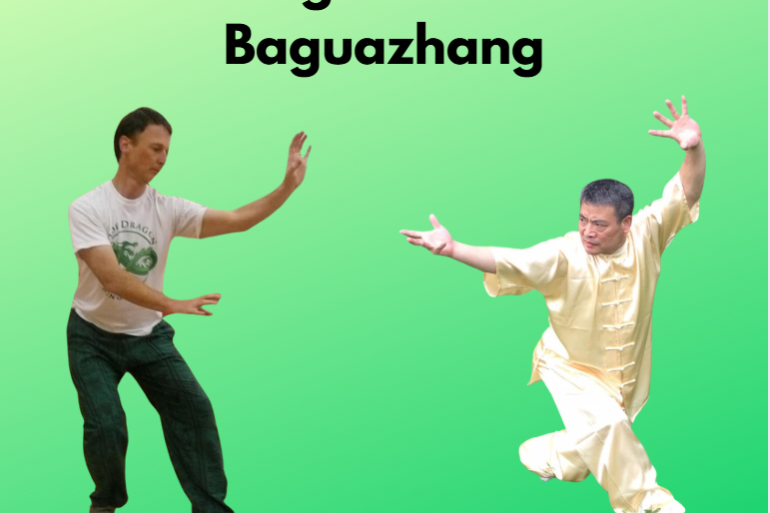Visit almost any park in China at dawn and you will find people doing a variety of traditional exercises. These exercises will look nothing like Western exercise. Some of them will be moving in the intricate patterns of tai chi. Others will be standing completely still yet utterly relaxed in a variety of postures. Stranger still some of them will be walking round and round in a circle then doing some intricate movements and then walking the other way round. These last people are practicing the extraordinary walking meditation and martial art that is baguazhang.
There exists a wonderful art. An art that restores balance, posture and relaxed power. An art that enables you to go for a long walk without ever leaving home. An art that will improve your awareness and sensitivity, heal your body and calm your mind.
This art has a name – baguazhang – or bagua for short (sometimes spelled pakua).
Baguazhang has roots going back thousands of years as a form of moving meditation used by monks on misty mountaintops to understand themselves and their place in the cosmos. Then it was discovered by a wandering martial artist who saw it’s potential in combat and he developed it into the most sophisticated and sought after martial art in China. It is the martial art that was chosen and used by the Imperial bodyguards to protect the life of the Emperor himself.
Baguazhang literally means eight trigram palm. It refers to the eight trigrams of the I Ching which has been used as a way of understanding the cycles of life and predicting future events for thousands of years. The I Ching may well be the world’s oldest surviving text.

The 8 trigrams of the I Ching
Baguazhang has much the same benefits that tai chi does plus some extra. It trains your body mind and breath differently so can achieve some of the benefits of tai chi more quickly.
For example at the end of a circle walking session you may find your whole body buzzing with qi energy rather than it being localised in different places such as the hands.
Walking the circle
Bagua has been named the art of walking in a circle. That is indeed the core training but it’s a lot more involved than that.
Baguazhang has a deep philosophy behind it. Essentially you are walking around the eight trigrams so with every step you are representing the myriad changes of nature.
While walking the circle your mind is in your body, relaxing it, feeling the constant changing of the balance and controlling the twisting and circling movements that are the signature of baguazhang.
Baguazhang is an activity that can be enjoyed by anyone of any age. Many people take it up in their later years to regain their mobility and balance and rediscover the joys of moving with the fluidity and grace of an animal.
The essence of bagua is to be found in walking the circle and it’s changes of direction. Everything in nature is circular and changes in regular cycles. The walking of the circle and the corresponding postures and movements while doing so are an expression of the constantly changing rhythms of nature.

To begin with it is way harder than it looks as you quickly realise just how unbalanced and uncoordinated you are. Regular practice makes it much easier and there are few exercises that are more pleasurable. Half an hour’s practice will seem like just five minutes when you start to get into it and discover the joys of balanced movement.
Baguazhang requires no special equipment or clothing. It can be done in a small area and doesn’t require you to remember complicated sequences of movements, although the more advanced palm changes may be hard to remember at first.
You walk the circle with your body erect, knees bent, twisted towards the centre. Periodically you change direction and also use different arm positions. It has a different feel to tai chi although the benefits are much the same.
In tai chi your lower body is rooted and heavy (yin) while your upper body is light and expressive (yang). In bagua that is reversed. Your upper body is often still and heavy (yin) while your lower body is light and mobile (yang).
Bagua is a much rarer art than tai chi yet just as beautiful and beneficial. Classes are few and far between.
Now you can learn Bagua from home with our Bagua Basics video course. It teaches everything you need to develop your balance, coordination, power, root and mobility through walking the circle in five videos. Click Here for more details.
[global-section id=”4477″]
